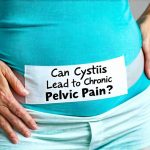Inflammation is a fundamental part of the body’s natural response to injury or infection, but when it becomes chronic or excessive, it can contribute to a wide range of urological conditions. From interstitial cystitis/bladder pain syndrome (IC/BPS) and prostatitis to post-surgical inflammation and kidney stone management, addressing inflammation is often crucial for symptom relief and improved patient outcomes. Urologists frequently employ anti-inflammatory medications – both systemic and localized – as part of a comprehensive treatment plan, recognizing that these drugs can play a vital role in managing discomfort and preserving organ function. Understanding the different types available, their mechanisms of action, and potential side effects is paramount for effective clinical practice and informed patient care.
The urological landscape presents unique challenges regarding inflammation. Unlike systemic inflammatory conditions, many urological issues involve localized inflammation within specific organs or tissues – the bladder, prostate, kidneys, or urethra. This often necessitates a tailored approach to medication selection, considering factors like the nature of the inflammation (acute vs. chronic), its location, and the patient’s overall health profile. Moreover, the long-term use of anti-inflammatory drugs requires careful monitoring due to potential adverse effects, demanding a balanced assessment between benefits and risks. This article will explore the principal anti-inflammatory medications utilized in urology, their applications, and important considerations for clinicians.
Nonsteroidal Anti-Inflammatory Drugs (NSAIDs)
Nonsteroidal anti-inflammatory drugs are perhaps the most commonly prescribed anti-inflammatory agents across many medical specialties, including urology. They work by inhibiting cyclooxygenase (COX) enzymes, which are responsible for producing prostaglandins – signaling molecules that contribute to inflammation, pain, and fever. There are two main COX isoforms: COX-1 and COX-2. Traditional NSAIDs typically inhibit both, while selective COX-2 inhibitors target only COX-2. This distinction is important as COX-1 plays a protective role in the stomach lining, and inhibiting it can increase the risk of gastrointestinal side effects.
NSAIDs find application in several urological scenarios. For kidney stone management, they can help reduce inflammation associated with ureteral obstruction and facilitate stone passage by decreasing prostaglandin-mediated ureteral spasms. In chronic prostatitis/chronic pelvic pain syndrome (CP/CPPS), NSAIDs may provide symptomatic relief from pain and discomfort. Certain patients with interstitial cystitis/bladder pain syndrome also experience some benefit from NSAIDs, although the response is variable. Post-operatively, they’re routinely used to manage inflammation and pain following procedures like vasectomy or prostate biopsy. However, it’s crucial to emphasize that long-term NSAID use can negatively impact kidney function, particularly in patients with pre-existing renal disease.
The choice of NSAID depends on the patient and clinical context. Naproxen, ibuprofen, and ketorolac are frequently used options. Selective COX-2 inhibitors like celecoxib offer a potentially lower risk of gastrointestinal side effects but may be associated with increased cardiovascular risks. Prescribing physicians must carefully weigh these risks and benefits, considering individual patient factors such as age, medical history, and concurrent medications. Monitoring renal function and providing patients with appropriate counseling regarding potential side effects are essential components of NSAID therapy.
Corticosteroids
Corticosteroids represent a more potent anti-inflammatory option than NSAIDs. They work by suppressing the immune system and reducing inflammation through multiple mechanisms, including inhibiting the production of inflammatory cytokines and decreasing the activity of immune cells. While highly effective, their use is generally reserved for specific urological conditions where other treatments have failed or are insufficient, due to their more significant potential for side effects.
Corticosteroids may be used in severe cases of interstitial cystitis/bladder pain syndrome where inflammation is pronounced and significantly impacting quality of life. In autoimmune-related bladder issues, they can help modulate the immune response. Additionally, corticosteroids find a role in managing acute prostate inflammation or as part of treatment regimens for certain types of glomerulonephritis affecting kidney function. However, their use is generally limited to short courses due to concerns about long-term adverse effects such as adrenal suppression, weight gain, increased risk of infection, and osteoporosis. Corticosteroids should never be abruptly discontinued, requiring a gradual tapering schedule under medical supervision.
The route of administration varies depending on the condition’s severity and location. Oral corticosteroids are commonly used for systemic inflammation, while intra-articular or intravesical injections may be considered for localized inflammation in specific cases. Careful patient selection, monitoring for side effects, and adherence to a proper tapering schedule are critical when using corticosteroids in urological practice.
Managing Inflammation Post-Urological Surgery
Postoperative inflammation is common following many urological procedures. Procedures like cystoscopy, prostate biopsy, TURP (transurethral resection of the prostate), and nephrectomy all cause tissue trauma that triggers an inflammatory response. This can lead to pain, swelling, urinary discomfort, and potentially delayed healing. Anti-inflammatory medications are often employed proactively to manage these symptoms and promote a smoother recovery.
- NSAIDs are frequently prescribed postoperatively for their analgesic and anti-inflammatory effects. The choice of NSAID will depend on the patient’s renal function and risk factors for gastrointestinal side effects.
- In some cases, short courses of corticosteroids might be considered if inflammation is particularly severe or persistent.
- Localized measures like cold packs can also help reduce swelling and discomfort postoperatively.
- Patients should receive clear instructions regarding medication use, potential side effects, and warning signs to report to their physician.
Anti-Inflammatory Approaches in Interstitial Cystitis/Bladder Pain Syndrome (IC/BPS)
Interstitial cystitis/bladder pain syndrome presents a complex inflammatory picture. While the exact cause remains unclear, chronic inflammation plays a central role in symptom generation. Treatment strategies often incorporate anti-inflammatory medications alongside other therapies like bladder training and pelvic floor rehabilitation.
- NSAIDs can offer some symptomatic relief for certain IC/BPS patients, but response rates are variable. Identifying responders early on is crucial.
- Pentosan polysulfate sodium (Elmiron) – although not strictly an NSAID or corticosteroid – has anti-inflammatory properties and is sometimes used to manage IC/BPS symptoms. It’s thought to repair the bladder lining and reduce inflammation. However, concerns regarding potential vision changes have led to increased scrutiny of its long-term use.
- Intravesical instillations of lidocaine and heparin can also provide some anti-inflammatory and analgesic benefits in selected patients.
Addressing Inflammation in Prostatitis/Chronic Pelvic Pain Syndrome (CP/CPPS)
Prostatitis, particularly the chronic non-bacterial form (CP/CPPS), is often characterized by persistent inflammation even in the absence of active infection. Managing this inflammation is key to alleviating symptoms like pelvic pain, urinary frequency, and dysuria.
- NSAIDs can be helpful for managing pain associated with CP/CPPS, but their efficacy varies among individuals.
- Alpha-blockers are frequently used in conjunction with anti-inflammatory medications as they help relax the prostate and bladder neck muscles, reducing urinary symptoms.
- Pelvic floor muscle rehabilitation is an important adjunct therapy that addresses muscle tension and inflammation contributing to pain.
- Antibiotics may be considered even in CP/CPPS cases, although their role remains controversial, particularly if bacterial cultures are negative. The goal is often to reduce inflammatory mediators rather than eradicate a specific infection.
Disclaimer: This article provides general information about anti-inflammatory medications used in urology and should not be interpreted as medical advice. Always consult with a qualified healthcare professional for diagnosis and treatment of any medical condition. Self-treating can be dangerous, and the information presented here does not substitute for personalized medical care.





















